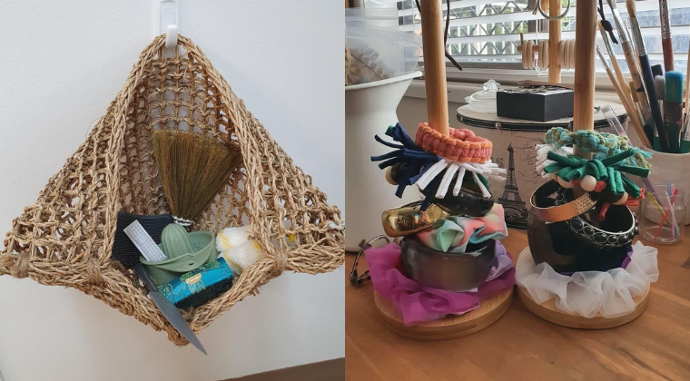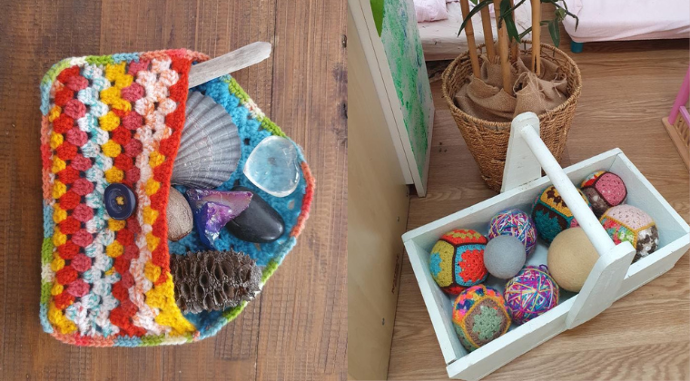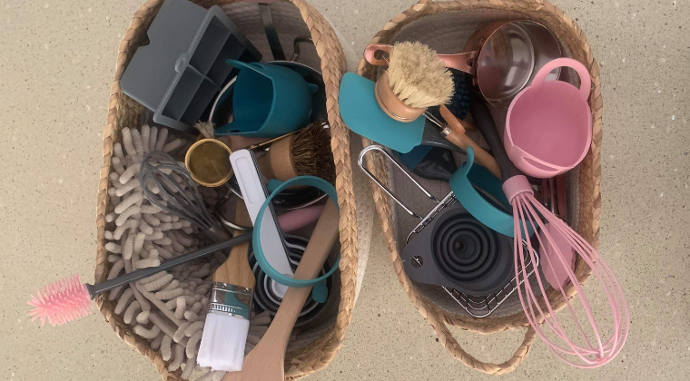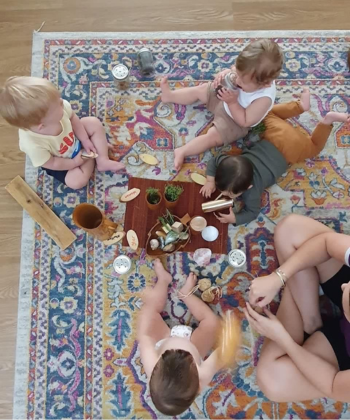Download this Article
Please subscribe below to download a printable copy of this article:
Curious to supercharge your learning spaces – without spending a fortune on the latest products and resources?
Let’s consider the learning-rich world of heuristic (or discovery) play. First coined in the 1940s by celebrated educationalist Elinor Goldschmied, the word ‘heuristic’ comes from the Greek heurisko, meaning ‘to discover or reach an understanding of' (Goldschmied & Jackson, 1994).
'I am a toddler. I am a sensory being. Let me touch, squeeze, taste, smell, hear and handle my world so I might understand it.'
When we think of the learning profile typical for this age-group, it’s perhaps easy to see why heuristic play and associated heuristic ‘treasure baskets’ are some of the most rewarding strategies we unpack at Phoenix Support for Educators.


'I am a toddler. I am an experimenter. Let me gather, push, pull, dump, roll, stack and knock over. Give me the tool to explore trial and error. Let me test and re-test.'
Informed by constructivist traditions, Goldschmied proposed that in exploring sensorily rich, open ended, everyday items, babies and toddlers come to deeply connect with and understand their world. For infants and toddlers, heuristic play engenders sensory delight and curiosity for learning. As they mature, heuristic play continues to stimulate creativity, language and communication, agency, problem solving and imaginative play - much as loose parts play does. Indeed, there is crossover between heuristic play and loose parts play (the theory described by architect Simon Nicholson in the 1970s) though for now let’s focus on Goldschmied.

Resources for heuristic play are sensorily rich, child-sized, open-ended, finely crafted, and often (but definitely not always) made from natural materials. Begin researching heuristic play and you will recognise many natural, found, and recycled resources already present in most early years settings: seed pods, driftwood, corks, crochet squares, a small mirror, curtain rings, lids, ribbons, coasters, bangles, cups and beakers, lengths of metal chain, pompoms and small balls, child-sized cooking implements, brushes of different types.
The key to Goldschmied’s vision though is in removing the distraction of more prescriptive toys and resources and providing resources in sufficient quantities to reduce the need to share resources. At least initially, the focus is on exploration: what is this and what can I do with it?
For educators, the challenge is to curate and facilitate but not lead the play. As Goldschmied and collaborator Sonia Jackson wrote in 1994 (republished 2014): “Put simply, (heuristic play) consists of offering a group of children, for a defined period of time in a controlled environment, a large number of objects and receptacles with which they play freely without adult intervention,” (Goldschmied and Jackson 2014, p128).
Educators implementing a heuristic play program will need to be prepared to carefully plan, curate and facilitate but not lead the play. The goal for the adult supporting heuristic play is to is be responsive and attentive but unobtrusive.
Curious to test heuristic play in your context? Consider the Treasure Basket, a term Goldschmied used to describe small baskets of 20-50 heuristic play items which seated babies explore. This play is typically ‘anchored’ on a neutral mat, and while an adult is present, responsive and observing, the exploration is led by the child.

More mobile babies and toddlers may benefit from heuristic play provocations set by their educators with equally open-ended intentions. For example, a well-stocked heuristic play program will have collections of up to 20-30 like materials such as bangles, egg cups, pom poms (see the list above for more inspiration). Arrange some of these mini collections on the floor together with several baskets, tins and containers which children are likely to incorporate into the heuristic play (kitchen stands and mug trees are also useful props in this regard).
Remember that adults remain accessible but sit back as the heuristic play unfolds – plenty of resources means there is no need for the children to ‘share’. Having set up the play space free from distractions and at a time when the children are alert and content, the adult role is to quietly re-set the materials to help give them clarity, observe the children’s play and allow time for unhurried packing away, placing like objects back together again and checking their condition before returning them to their place on an accessible shelf.

Still curious about the possibilities for heuristic play? Consider a play comparison. Take a basket filled with 20 regular items from your room. Now create an equivalent basket of 20 items selected with a priority on heuristic play – sensorily rich and diverse, open-ended, everyday items. Clear an open space and place the two baskets side by side. Without introducing the baskets to the children, simply sit with them and observe their interactions. Which baskets hold attention or provoke curiosity? Notice how long children focus on items from each basket and the complexity of their exploration.
Educators implementing heuristic play will find it helpful to reflect deeply on the Early Years Learning Framework (AGDE, 2022) practices and principles. For example, how does our selection of resources reflect high expectations for every child? How do our resources respect cultural diversity? How does heuristic play support educators meaningful assessment ‘for’, ‘of’, and ‘as’ learning for children?
We hope this post has given you a taste for heuristic play and how it might be implemented in your context. Goldschmied and Jackson assure us, ‘there is no right way to do it and people in different settings will have their own ideas and collect their own materials’ (Goldschmied & Jackson, 2014. p130).
The Early Years Learning Framework 2.0 (2022) invites us to critically reflect on ‘what theories, philosophies and understanding shape and assist our work with children (p18). Goldschmied’s Heuristic Play is a simple yet sophisticated perspective to take into account when planning for learning and enriched caregiving. We hope you enjoy exploring it as much as the children do!
References
Goldschmied, E., Jackson, S. (2014). People under Three, Young Children in Day Care (3rd edition). Routledge, London & New York, 2014.
Australian Government Department of Education [AGDE] (2022). Belonging, Being and Becoming: The Early Years Learning Framework for Australia (V2.0). Australian Government Department of Education for the Ministerial Council.
Written By Mim Brown and Tara Hill, Phoenix Support for Educators
Photos from Goodstart Shailer Park and Lovelylane creations